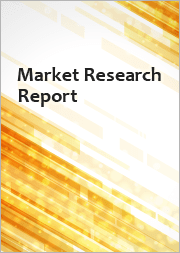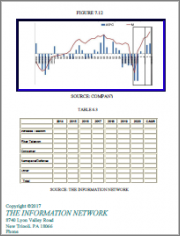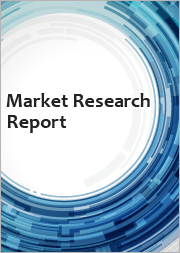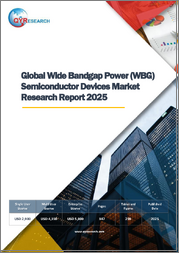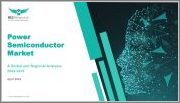
|
시장보고서
상품코드
1461951
전력 반도체 시장 : 세계 및 지역별 분석(2024-2033년)Power Semiconductor Market: A Global and Regional Analysis, 2024-2033 |
||||||
세계의 전력 반도체 시장 규모는 다양한 요인과 주요 추진력을 통해 크게 성장하고 있습니다.
이 확장의 주요 촉매는 다양한 용도에 걸친 에너지 효율적인 기술에 대한 수요 증가입니다. 전력 트랜지스터, 다이오드, 사이리스터 등의 소자를 포함하는 전력 반도체는 전력 변환 및 관리를 최적화하는데 중요한 역할을 합니다. 산업계가 보다 높은 에너지 효율을 달성하고 이산화탄소 배출량을 줄이려고 노력하는 동안, 전력 반도체는 전원, 모터 구동, 신재생 에너지 시스템 등의 용도에 필수적인 부품이 되고 있습니다. 전기자동차의 성장과 신재생 에너지원으로의 전환은 전기드라이브 트레인과 신재생 에너지 시스템의 전력을 효율적으로 제어 및 변환하는데 있어서 필수적인 역할을 하는 전력 반도체 수요를 한층 더 높이고 있습니다.
기술 발전과 반도체 제조 공정의 지속적인 진화는 세계 전력 반도체 시장의 성장을 지원하는 주요 요인입니다. 탄화규소(SiC)나 질화갈륨(GaN) 등의 와이드 밴드갭 반도체의 개발에 의해 반도체 디바이스의 효율과 전력 밀도의 향상이 가능해지고 있습니다. 와이드 밴드갭 재료는 열 성능을 향상시키고 에너지 손실을 줄여 고출력 및 고주파 용도에서 특히 가치를 발휘합니다. 또한 스마트 기술, 자동화 및 사물 인터넷(IoT)의 보급으로 다양한 전자 시스템에서 전력 반도체의 통합이 진행되고 있습니다. 산업계가 디지털 전환과 전기의 동향을 받아들이는 동안, 전력 반도체 수요는 다양한 용도에 있어서의 효율과 성능의 강화에 초점을 맞추면서 성장을 계속할 것으로 예상됩니다.
이 보고서는 세계의 전력 반도체 시장에 대해 조사했으며, 시장 개요와 함께 용도별, 제품별, 지역별 동향, 시장 진출기업 프로파일 등의 정보를 제공합니다.
목차
주요 요약
제1장 시장 : 업계 전망
- 동향 : 현재 및 미래의 영향 평가
- 공급망 개요
- R&D 리뷰
- 규제 상황
- 이해관계자 분석
- 주요 세계적 사건의 영향 분석-COVID19, 러시아와 우크라이나, 중동 위기
- 전력 반도체 시장에서 주요 기업의 최근 동향
- 시장 역학 개요
제2장 용도
- 용도의 세분화
- 용도 개요
- 세계의 전력 반도체 시장 : 용도별
제3장 제품
- 제품 세분화
- 제품 개요
- 세계의 전력 반도체 시장 : 컴포넌트별
- 세계의 전력 반도체 시장 : 제품별
제4장 지역
- 지역별 개요
- 성장 촉진요인 및 억제요인
- 북미
- 유럽
- 아시아태평양
- 기타 지역
제5장 시장 : 경쟁 구도 및 기업 프로파일
- 경쟁 구도
- 기업 프로파일
- ON Semiconductor Corporation
- Renesas Electronics
- Toshiba Corporation.
- NXP Semiconductors NV
- Fuji Electric Co Ltd.
- Infineon Technologies AG
- Texas Instruments Inc.
- STMicroelectronics NV
- Mitsubishi Electric Corporation
- Hitachi, Ltd
- Maxim Integrated Products, Inc.
- ROHM Semiconductor
- Allegro MicroSystems, LLC
- Littelfuse, Inc.
- Vishay Intertechnology, Inc.
- 기타 주요 시장 진출기업
제6장 성장 기회 및 권장 사항
제7장 조사 방법
AJY 24.04.22The global power semiconductor market has experienced substantial growth, driven by various factors and key driving forces. A primary catalyst for this expansion is the rising demand for energy-efficient technologies across a diverse range of applications. Power semiconductors, encompassing devices like power transistors, diodes, and thyristors, play a crucial role in optimizing the conversion and management of electrical power. As industries strive to achieve greater energy efficiency and reduce their carbon footprint, power semiconductors have become indispensable components in applications such as power supplies, motor drives, and renewable energy systems. The growth of electric vehicles and the transition to renewable energy sources have further heightened the demand for power semiconductors, given their integral role in efficiently controlling and converting electrical power in electric drivetrains and renewable energy systems.
Technological advancements and the ongoing evolution of semiconductor manufacturing processes are key drivers behind the growth of the global power semiconductor market. The development of wide-bandgap semiconductors, such as silicon carbide (SiC) and gallium nitride (GaN), has enabled higher efficiency and power density in semiconductor devices. Wide-bandgap materials offer improved thermal performance and reduced energy losses, making them particularly valuable in high-power and high-frequency applications. Additionally, the widespread adoption of smart technologies, automation, and the Internet of Things (IoT) has led to an increased integration of power semiconductors in various electronic systems. As industries embrace digital transformation and electrification trends, the demand for power semiconductors is expected to continue growing, with a focus on enhancing efficiency and performance across diverse applications.
Market Segmentation:
Segmentation 1: by Application
- IT and Telecommunication
- Automotive
- Aerospace and Defense
- Transportation
- Medical
- Energy and Power
- Others
Segmentation 2: by Component
- Discrete
- Module
- Power Integrated Circuits
Segmentation 3: by Product
- Silicon Carbide (SiC)
- Gallium Nitride (GaN)
- Others
Segmentation 4: by Region
- North America
- Europe
- Asia-Pacific
- Rest-of-the-World
Key Questions Answered in this Report:
- What are the main factors driving the demand for global power semiconductor market?
- What are the major patents filed by the companies active in the global power semiconductor market?
- What are the strategies adopted by the key companies to gain a competitive edge in power semiconductor industry?
- What is the futuristic outlook for the power semiconductor in terms of growth potential?
- Which application, component and product is expected to lead the market over the forecast period (2024-2033)?
- Which region and country is expected to lead the market over the forecast period (2024-2033)?
Table of Contents
Executive Summary
Scope and Definition
Market/Product Definition
Key Questions Answered
Analysis and Forecast Note
1 Markets: Industry Outlook
- 1.1 Trends: Current and Future Impact Assessment
- 1.1.1 Increase in the use of solar photovoltaic panels to generate electricity
- 1.1.2 Growing demand for wireless communication and consumer electronics
- 1.2 Supply Chain Overview
- 1.2.1 Value chain Analysis
- 1.2.2 Market Map
- 1.3 R&D Review
- 1.3.1 Patent Filing Trend by Country, by Company
- 1.4 Regulatory Landscape
- 1.5 Stakeholder Analysis
- 1.5.1 Use case
- 1.5.2 End User and buying criteria
- 1.6 Impact analysis for Key Global Events-covid19, Russia/Ukraine or Middle East crisis
- 1.7 Recent Developments by Key Players in Power Semiconductor Market
- 1.8 Market Dynamics Overview
- 1.8.1 Market Drivers
- 1.8.2 Market Restraints
- 1.8.3 Market Opportunities
2 Application
- 2.1 Application Segmentation
- 2.2 Application Summary
- 2.3 Global Power Semiconductor Market - by Application
- 2.3.1 IT and Telecommunication
- 2.3.2 Automotive
- 2.3.3 Aerospace and Defense
- 2.3.4 Transportation
- 2.3.5 Medical
- 2.3.6 Energy and Power
- 2.3.7 Others
3 Product
- 3.1 Product Segmentation
- 3.2 Product Summary
- 3.3 Global Power Semiconductor Market - by Component
- 3.3.1 Discrete
- 3.3.2 Module
- 3.3.3 Power Integrated Circuits
- 3.4 Global Power Semiconductor Market - by Product
- 3.4.1 Silicon Carbide (SiC)
- 3.4.2 Gallium Nitride (GaN)
- 3.4.3 Others
4 Region
- 4.1 Regional Summary
Table: Global Power Semiconductor Market, By Region, ($ Million), 2023-2033
- 4.2 Drivers and Restraints
- 4.3 North America
- 4.3.1 Key Market Participants in North America
- 4.3.2 Business Drivers
- 4.3.3 Business Challenges
- 4.3.4 Application
Table: North America Power Semiconductor Market, by Application ($ Million), 2023-2033
- 4.3.5 Product
Table: North America Power Semiconductor Market, by Component ($ Million), 2023-2033
Table: North America Power Semiconductor Market, by Product ($ Million), 2023-2033
- 4.3.6 North America Power Semiconductor Market (by Country)
- 4.3.6.1 U.S.
Table: U.S. Power Semiconductor Market, by Application ($ Million), 2023-2033
Table: U.S. Power Semiconductor Market, by Component ($ Million), 2023-2033
Table: U.S. Power Semiconductor Market, by Product ($ Million), 2023-2033
- 4.3.6.2 Canada
Table: Canada Power Semiconductor Market, by Application ($ Million), 2023-2033
Table: Canada Power Semiconductor Market, by Component ($ Million), 2023-2033
Table: Canada Power Semiconductor Market, by Product ($ Million), 2023-2033
- 4.3.6.3 Mexico
Table: Mexico Power Semiconductor Market, by Application ($ Million), 2023-2033
Table: Mexico Power Semiconductor Market, by Component ($ Million), 2023-2033
Table: Mexico Power Semiconductor Market, by Product ($ Million), 2023-2033
- 4.4 Europe
- 4.4.1 Key Market Participants in Europe
- 4.4.2 Business Drivers
- 4.4.3 Business Challenges
- 4.4.4 Application
Table: Europe Power Semiconductor Market, by Application ($ Million), 2023-2033
- 4.4.5 Product
Table: Europe Power Semiconductor Market, by Component ($ Million), 2023-2033
Table: Europe Power Semiconductor Market, by Product ($ Million), 2023-2033
- 4.4.6 Europe Power Semiconductor Market (by Country)
- 4.4.6.1 Germany
Table: Germany Power Semiconductor Market, by Application ($ Million), 2023-2033
Table: Germany Power Semiconductor Market, by Component ($ Million), 2023-2033
Table: Germany Power Semiconductor Market, by Product ($ Million), 2023-2033
- 4.4.6.2 France
Table: France Power Semiconductor Market, by Application ($ Million), 2023-2033
Table: France Power Semiconductor Market, by Component ($ Million), 2023-2033
Table: France Power Semiconductor Market, by Product ($ Million), 2023-2033
- 4.4.6.3 Italy
Table: Italy Power Semiconductor Market, by Application ($ Million), 2023-2033
Table: Italy Power Semiconductor Market, by Component ($ Million), 2023-2033
Table: Italy Power Semiconductor Market, by Product ($ Million), 2023-2033
- 4.4.6.4 Spain
Table: Spain Power Semiconductor Market, by Application ($ Million), 2023-2033
Table: Spain Power Semiconductor Market, by Component ($ Million), 2023-2033
Table: Spain Power Semiconductor Market, by Product ($ Million), 2023-2033
- 4.4.6.5 U.K.
Table: U.K. Power Semiconductor Market, by Application ($ Million), 2023-2033
Table: U.K. Power Semiconductor Market, by Component ($ Million), 2023-2033
Table: U.K. Power Semiconductor Market, by Product ($ Million), 2023-2033
- 4.4.6.6 Rest-of-Europe
Table: Rest-of-Europe Power Semiconductor Market, by Application ($ Million), 2023-2033
Table: Rest-of-Europe Power Semiconductor Market, by Component ($ Million), 2023-2033
Table: Rest-of-Europe Power Semiconductor Market, by Product ($ Million), 2023-2033
- 4.5 Asia-Pacific
- 4.5.1 Key Market Participants in Asia-Pacific
- 4.5.2 Business Drivers
- 4.5.3 Business Challenges
- 4.5.4 Application
Table: Asia-Pacific Power Semiconductor Market, by Application ($ Million), 2023-2033
- 4.5.5 Product
Table: Asia-Pacific Power Semiconductor Market, by Component ($ Million), 2023-2033
Table: Asia-Pacific Power Semiconductor Market, by Product ($ Million), 2023-2033
- 4.5.6 Asia-Pacific Power Semiconductor Market (by Country)
- 4.5.6.1 China
Table: China Power Semiconductor Market, by Application ($ Million), 2023-2033
Table: China Power Semiconductor Market, by Component ($ Million), 2023-2033
Table: China Power Semiconductor Market, by Product ($ Million), 2023-2033
- 4.5.6.2 Japan
Table: Japan Power Semiconductor Market, by Application ($ Million), 2023-2033
Table: Japan Power Semiconductor Market, by Component ($ Million), 2023-2033
Table: Japan Power Semiconductor Market, by Product ($ Million), 2023-2033
- 4.5.6.3 India
Table: India Power Semiconductor Market, by Application ($ Million), 2023-2033
Table: India Power Semiconductor Market, by Component ($ Million), 2023-2033
Table: India Power Semiconductor Market, by Product ($ Million), 2023-2033
- 4.5.6.4 South Korea
Table: South Korea Power Semiconductor Market, by Application ($ Million), 2023-2033
Table: South Korea Power Semiconductor Market, by Component ($ Million), 2023-2033
Table: South Korea Power Semiconductor Market, by Product ($ Million), 2023-2033
- 4.5.6.5 Rest-of-Asia-Pacific
Table: Rest-of-Asia-Pacific Power Semiconductor Market, by Application ($ Million), 2023-2033
Table: Rest-of-Asia-Pacific Power Semiconductor Market, by Component ($ Million), 2023-2033
Table: Rest-of-Asia-Pacific Power Semiconductor Market, by Product ($ Million), 2023-2033
- 4.6 Rest-of-the-World
- 4.6.1 Key Market Participants in Rest-of-the-World
- 4.6.2 Business Drivers
- 4.6.3 Business Challenges
- 4.6.4 Application
Table: Rest-of-the-World Power Semiconductor Market, by Application ($ Million), 2023-2033
- 4.6.5 Product
Table: Rest-of-the-World Power Semiconductor Market, by Component ($ Million), 2023-2033
Table: Rest-of-the-World Power Semiconductor Market, by Product ($ Million), 2023-2033
- 4.6.6 Rest of the World Power Semiconductor Market (By Region)
- 4.6.6.1 The Middle East and Africa
Table: The Middle East and Africa Power Semiconductor Market, by Application ($ Million), 2023-2033
Table: The Middle East and Africa Power Semiconductor Market, by Component ($ Million), 2023-2033
Table: The Middle East and Africa Power Semiconductor Market, by Product ($ Million), 2023-2033
- 4.6.6.2 South America
Table: South America Power Semiconductor Market, by Application ($ Million), 2023-2033
Table: South America Power Semiconductor Market, by Component ($ Million), 2023-2033
Table: South America Power Semiconductor Market, by Product ($ Million), 2023-2033
5 Markets - Competitive Landscape & Company Profiles
- 5.1 Competitive Landscape
- 5.2 Company Profiles
- 5.2.1 ON Semiconductor Corporation
- 5.2.1.1 Overview
- 5.2.1.2 Top Products / Product Portfolio
- 5.2.1.3 Top Competitors
- 5.2.1.4 Target Customers/End-Users
- 5.2.1.5 Key Personnel
- 5.2.1.6 Analyst View
- 5.2.1.7 Market Share
- 5.2.2 Renesas Electronics
- 5.2.2.1 Overview
- 5.2.2.2 Top Products / Product Portfolio
- 5.2.2.3 Top Competitors
- 5.2.2.4 Target Customers/End-Users
- 5.2.2.5 Key Personnel
- 5.2.2.6 Analyst View
- 5.2.2.7 Market Share
- 5.2.3 Toshiba Corporation.
- 5.2.3.1 Overview
- 5.2.3.2 Top Products / Product Portfolio
- 5.2.3.3 Top Competitors
- 5.2.3.4 Target Customers/End-Users
- 5.2.3.5 Key Personnel
- 5.2.3.6 Analyst View
- 5.2.3.7 Market Share
- 5.2.4 NXP Semiconductors N.V.
- 5.2.4.1 Overview
- 5.2.4.2 Top Products / Product Portfolio
- 5.2.4.3 Top Competitors
- 5.2.4.4 Target Customers/End-Users
- 5.2.4.5 Key Personnel
- 5.2.4.6 Analyst View
- 5.2.4.7 Market Share
- 5.2.5 Fuji Electric Co Ltd.
- 5.2.5.1 Overview
- 5.2.5.2 Top Products / Product Portfolio
- 5.2.5.3 Top Competitors
- 5.2.5.4 Target Customers/End-Users
- 5.2.5.5 Key Personnel
- 5.2.5.6 Analyst View
- 5.2.5.7 Market Share
- 5.2.6 Infineon Technologies AG
- 5.2.6.1 Overview
- 5.2.6.2 Top Products / Product Portfolio
- 5.2.6.3 Top Competitors
- 5.2.6.4 Target Customers/End-Users
- 5.2.6.5 Key Personnel
- 5.2.6.6 Analyst View
- 5.2.6.7 Market Share
- 5.2.7 Texas Instruments Inc.
- 5.2.7.1 Overview
- 5.2.7.2 Top Products / Product Portfolio
- 5.2.7.3 Top Competitors
- 5.2.7.4 Target Customers/End-Users
- 5.2.7.5 Key Personnel
- 5.2.7.6 Analyst View
- 5.2.7.7 Market Share
- 5.2.8 STMicroelectronics N.V.
- 5.2.8.1 Overview
- 5.2.8.2 Top Products / Product Portfolio
- 5.2.8.3 Top Competitors
- 5.2.8.4 Target Customers/End-Users
- 5.2.8.5 Key Personnel
- 5.2.8.6 Analyst View
- 5.2.8.7 Market Share
- 5.2.9 Mitsubishi Electric Corporation
- 5.2.9.1 Overview
- 5.2.9.2 Top Products / Product Portfolio
- 5.2.9.3 Top Competitors
- 5.2.9.4 Target Customers/End-Users
- 5.2.9.5 Key Personnel
- 5.2.9.6 Analyst View
- 5.2.9.7 Market Share
- 5.2.10 Hitachi, Ltd
- 5.2.10.1 Overview
- 5.2.10.2 Top Products / Product Portfolio
- 5.2.10.3 Top Competitors
- 5.2.10.4 Target Customers/End-Users
- 5.2.10.5 Key Personnel
- 5.2.10.6 Analyst View
- 5.2.10.7 Market Share
- 5.2.11 Maxim Integrated Products, Inc.
- 5.2.11.1 Overview
- 5.2.11.2 Top Products / Product Portfolio
- 5.2.11.3 Top Competitors
- 5.2.11.4 Target Customers/End-Users
- 5.2.11.5 Key Personnel
- 5.2.11.6 Analyst View
- 5.2.11.7 Market Share
- 5.2.12 ROHM Semiconductor
- 5.2.12.1 Overview
- 5.2.12.2 Top Products / Product Portfolio
- 5.2.12.3 Top Competitors
- 5.2.12.4 Target Customers/End-Users
- 5.2.12.5 Key Personnel
- 5.2.12.6 Analyst View
- 5.2.12.7 Market Share
- 5.2.13 Allegro MicroSystems, LLC
- 5.2.13.1 Overview
- 5.2.13.2 Top Products / Product Portfolio
- 5.2.13.3 Top Competitors
- 5.2.13.4 Target Customers/End-Users
- 5.2.13.5 Key Personnel
- 5.2.13.6 Analyst View
- 5.2.13.7 Market Share
- 5.2.14 Littelfuse, Inc.
- 5.2.14.1 Overview
- 5.2.14.2 Top Products / Product Portfolio
- 5.2.14.3 Top Competitors
- 5.2.14.4 Target Customers/End-Users
- 5.2.14.5 Key Personnel
- 5.2.14.6 Analyst View
- 5.2.14.7 Market Share
- 5.2.15 Vishay Intertechnology, Inc.
- 5.2.15.1 Overview
- 5.2.15.2 Top Products / Product Portfolio
- 5.2.15.3 Top Competitors
- 5.2.15.4 Target Customers/End-Users
- 5.2.15.5 Key Personnel
- 5.2.15.6 Analyst View
- 5.2.15.7 Market Share
- 5.2.1 ON Semiconductor Corporation
- 5.3 Other Key Market Participants







